Milwaukee 2156-AC Handleiding
Bekijk gratis de handleiding van Milwaukee 2156-AC (12 pagina’s), behorend tot de categorie Zaklamp. Deze gids werd als nuttig beoordeeld door 62 mensen en kreeg gemiddeld 3.8 sterren uit 31.5 reviews. Heb je een vraag over Milwaukee 2156-AC of wil je andere gebruikers van dit product iets vragen? Stel een vraag
Pagina 1/12

Cat. No. / No de cat.
2156-AC
2156-TL
2156-MC
ADIUS™
LED 130W TEMPORARY SITE LIGHT
LAMPE À DEL TEMPORELLE À 130 W
LÁMPARA DE TRABAJO TEMPORAL DE LED DE 130 W
OPERATOR'S MANUAL
MANUEL de L'UTILISATEUR
MANUAL del OPERADOR
WARNING To reduce the risk of injury, user must read and understand operator's manual.
AVERTISSEMENT An de réduire le risque de blessures, l'utilisateur doit lire et bien
comprendre le manuel.
ADVERTENCIA Para reducir el riesgo de lesiones, el usuario debe leer y entender el manual.

2
IMPORTANT SAFETY
INSTRUCTIONS
WARNING
Read all safety warn-
ings and all instruc-
tions. Failure to follow
the warnings and instructions may result in electric
shock, re and/or serious injury. Save all warnings
and instructions for future reference.
WORK AREA SAFETY
• To reduce the risk of injury, close supervision is
necessary when an appliance is used near children.
• Store idle light out of reach of children. Warm
lights can become hazardous in the hands of children.
ELECTRICAL SAFETY
• Power cord plugs must match the outlet. Never
modify the plug in any way. Do not use any
adapter plugs with earthed (grounded) power
tools. This product has a polarized plug (one
blade is wider than the other). This plug will t in
a polarized outlet only one way. If the plug does
not t fully, reverse the plug. If it still does not t,
contact a qualied electrician. Unmodied plugs
and matching outlets will reduce risk of electric shock.
• Avoid body contact with earthed or grounded
surfaces, such as pipes, radiators, ranges and
refrigerators. There is an increased risk of electric
shock if your body is earthed or grounded.
• Suitable for damp locations. Store indoors.
• To reduce the risk of electric shock, do not put light
in water or other liquid. Do not place or store appli-
ance where it can fall or be pulled into a tub or sink.
• Secure wiring cover and hanging cable before use.
• Do not abuse the cord. Never use the cord for
carrying, pulling or unplugging the power tool.
Keep cord away from heat, oil, sharp edges
or moving parts. Damaged or entangled cords
increase the risk of electric shock.
• Keep cords dry and off the ground. Arrange
cords carefully to avoid hazardous environ-
ments. Tripping or snagging on cords can cause
injury and product damage. Do not allow cords to
run through puddles or across wet ground.
• Do not unplug by pulling on the cord. To unplug,
grasp the plug, not the cord.
• Unplug the cord from outlet when not in use and
before servicing or cleaning.
• Always use a suitable extension cord to reduce
the risk of electric shock.
• Connect to a properly grounded outlet. If oper-
ating a light in a damp location is unavoidable,
use a ground fault circuit interrupter (GFCI)
protected supply. Use of an GFCI reduces the risk
of electric shock.
• A maximum of three 10 AWG through branch
circuit conductors suitable for 60°C permitted
in box. Suitable for Types NM and MC cable only.
• Always install light in accordance with local and
national codes.
•
CAUTION
Do not use in hazardous locations
as required by the Canadian
Electrical Code Part 2.
PERSONAL SAFETY
• Do not overreach. Keep proper footing and bal-
ance at all times. This enables better control of the
light in unexpected situations.
• Do not use on a ladder or unstable support.
Stable footing on a solid surface enables better
control of the light in unexpected situations.
SERVICE
• Have your light serviced by a qualied repair per-
son using only identical replacement parts. This
will ensure that the safety of the light is maintained.
SPECIFIC SAFETY RULES
• Always use common sense and be cautious
when using tools. It is not possible to anticipate
every situation that could result in a dangerous out-
come. Do not use this tool if you do not understand
these operating instructions or you feel the work is
beyond your capability; contact Milwaukee Tool or
a trained professional for additional information or
training.
•Maintain labels and nameplates. These carry im-
portant information. If unreadable or missing, contact
a MILWAUKEE service facility for a free replacement.
EXTENSION CORDS
Grounded tools require a three wire extension cord.
Double insulated tools can use either a two or three wire
extension cord. As the distance from the supply outlet
increases, you must use a heavier gauge extension
cord. Using extension cords with inadequately sized
wire causes a serious drop in voltage, resulting in loss
of power and possible tool damage. Refer to the table
shown to determine the required minimum wire size.
The smaller the gauge number of the wire, the greater
the capacity of the cord. For example, a 14 gauge cord
can carry a higher current than a 16 gauge cord. When
using more than one extension cord to make up the
total length, be sure each cord contains at least the
minimum wire size required. If you are using one exten-
sion cord for more than one tool, add the nameplate
amperes and use the sum to determine the required
minimum wire size.
Guidelines for Using Extension Cords
• Be sure your extension cord is properly wired and in
good electrical condition. Always replace a damaged
extension cord or have it repaired by a qualied
person before using it.
• Protect your extension cords from sharp objects,
excessive heat and damp or wet areas.
• When stringing lights together, consider the total
Amperes draw when selecting the extension cords.
Recommended Minimum Wire Gauge
For Extension Cords*
Nameplate
Amperes
Extension Cord Length
25' 50' 75' 100' 150'
0 - 2.0
2.1 - 3.4
3.5 - 5.0
5.1 - 7.0
7.1 - 12.0
12.1 - 16.0
16.1 - 20.0
18
18
18
18
16
14
12
18
18
18
16
14
12
10
18
18
16
14
12
10
--
18
16
14
12
10
--
--
16
14
12
12
--
--
--
* Based on limiting the line voltage drop to ve volts at 150%
of the rated amperes.
READ AND SAVE ALL INSTRUCTIONS
FOR FUTURE USE.

3
FUNCTIONAL DESCRIPTION
1. Wiring Cover
2. Cover
Release
Button
3. Cable
4. Wire Strain
Relief
5. Cable Clamp
6. AC Input/
Output
7. Pad Lock
8. LED Cover
1
2
3
4
8
7
5
6
ASSEMBLY
WARNING
To reduce the risk of injury, always
unplug tool before changing or
removing accessories. Only use accessories
specically recommended for this tool. Others
may be hazardous.
Wiring
WARNING
Always install light in accordance
with local codes.
To add lights in a chain, or replace the wiring:
1. Unplug the light.
2. Open the wiring cover by pushing the cover re-
lease button with the tip of a screwdriver.
3. To add wiring, expose 3 to 4 inches of the wires
from the outer jacket/armor.
4. Feed the wire through the AC input/output holes, and
butt the outer jacket/armor up against the wire clamps.
5. Tighten the wire clamps using the clamping screws.
Hand tighten wire clamp screws securely to 8 lb-in.
6. Wire the lamp according to the diagrams below.
Hand tighten terminal block screws securely to
10 lb-in.
7. Close the wiring cover securely.
GROUNDING
DANGER
Improperly connecting the ground-
ing wire can result in the risk of
electric shock. Check with a qualied electrician if
you are in doubt as to whether the outlet is prop-
erly grounded. Do not modify the plug provided
with the tool. Never remove the grounding prong
from the plug. Do not use the tool if the cord or
plug is damaged. If damaged, have it repaired by a
MILWAUKEE service facility before use. If the plug
will not t the outlet, have a proper outlet installed
by a qualied electrician.
Grounded Tools
Tools with Three Prong Plugs
Tools marked “Grounding Required” have a three
wire cord and three prong grounding plug. The plug
must be connected to a properly grounded outlet
(See Figure A). If the tool should
electrically malfunction or break
down, grounding provides a low
resistance path to carry electricity
away from the user, reducing the
risk of electric shock.
The grounding prong in the plug
is connected through the green wire inside the
cord to the grounding system in the tool. The green
wire in the cord must be the only wire connected
to the tool's grounding system and must never be
attached to an electrically "live" terminal. Your tool
must be plugged into an appropriate outlet, properly
installed and grounded in accordance with all codes
and ordinances. The plug and outlet should look like
those in Figure A.
SYMBOLOGY
Volts
Alternating Current
Electrical Shock Hazard
Read Operator's Manual
CAUTION
Do not stare at the
operating light source
C US
UL Listing for Canada and U.S.
SPECIFICATIONS
Cat. No. 2156-AC ....................................................
Wiring .................................................3 Prong Plug
Cat. No. 2156-TL .....................................................
Wiring .........................3 Prong L5-20P and L5-20R
Cat. No. 2156-MC ....................................................
Wiring ................................................ 3 Wire Leads
AC Input Volts .............................................110-277
AC Input Watts ..................................................130
AC Output Volts ..........................................110-277
Max Terminal Block Ampacity ........................... 15A
Consult with Local and National Electrical Codes
Fig. A
Product specificaties
| Merk: | Milwaukee |
| Categorie: | Zaklamp |
| Model: | 2156-AC |
Heb je hulp nodig?
Als je hulp nodig hebt met Milwaukee 2156-AC stel dan hieronder een vraag en andere gebruikers zullen je antwoorden
Handleiding Zaklamp Milwaukee
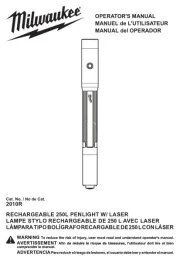
15 Juli 2025
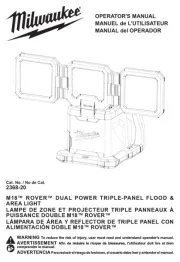
14 Juli 2025
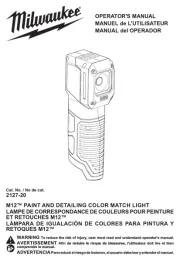
14 Juli 2025
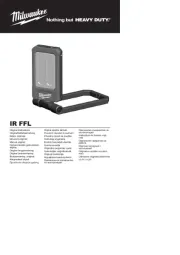
14 Juli 2025

10 April 2024

10 April 2024

10 April 2024

10 April 2024

10 April 2024

10 April 2024
Handleiding Zaklamp
- TFA
- Kogan
- BEKO
- Garmin
- Alpha
- Hama
- Craftsman
- Silva Schneider
- Sanyo
- WAGAN
- Trebs
- EverActive
- Varta
- Princeton Tec
- NEO Tools
Nieuwste handleidingen voor Zaklamp
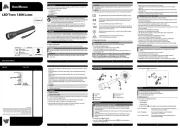
16 Juli 2025
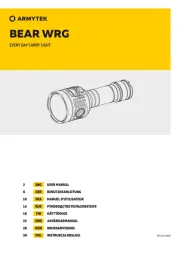
14 Juli 2025
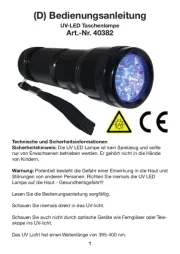
10 Juli 2025
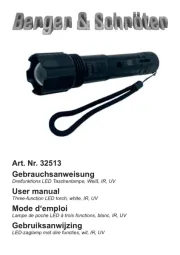
5 Juli 2025
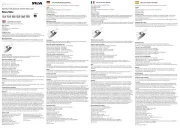
4 Juli 2025
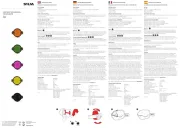
4 Juli 2025

3 Juli 2025

3 Juli 2025
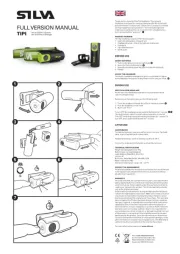
3 Juli 2025

2 Juli 2025